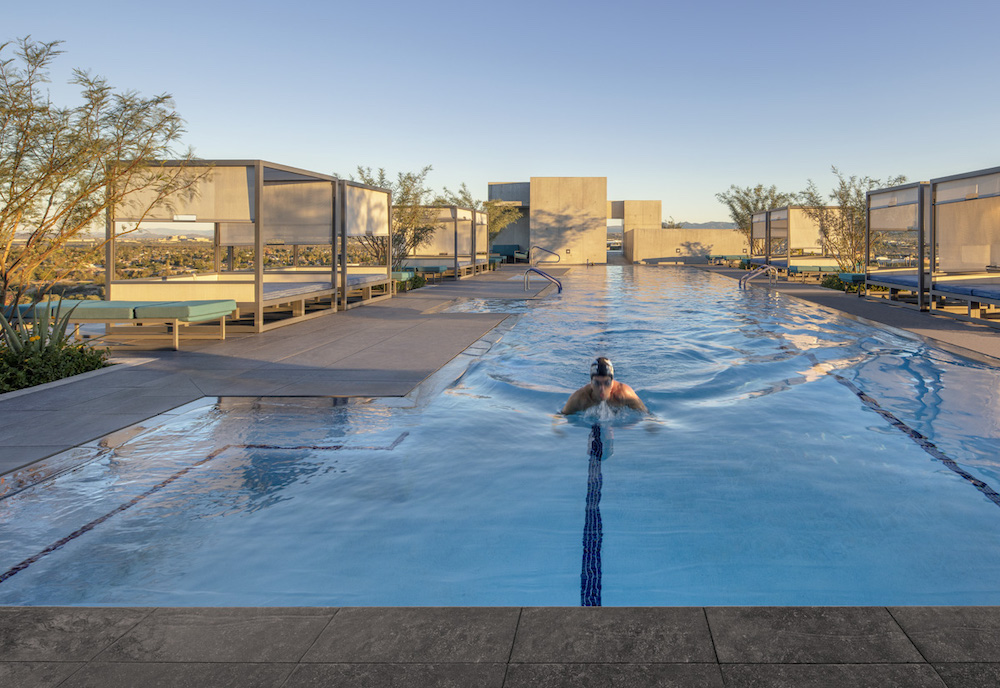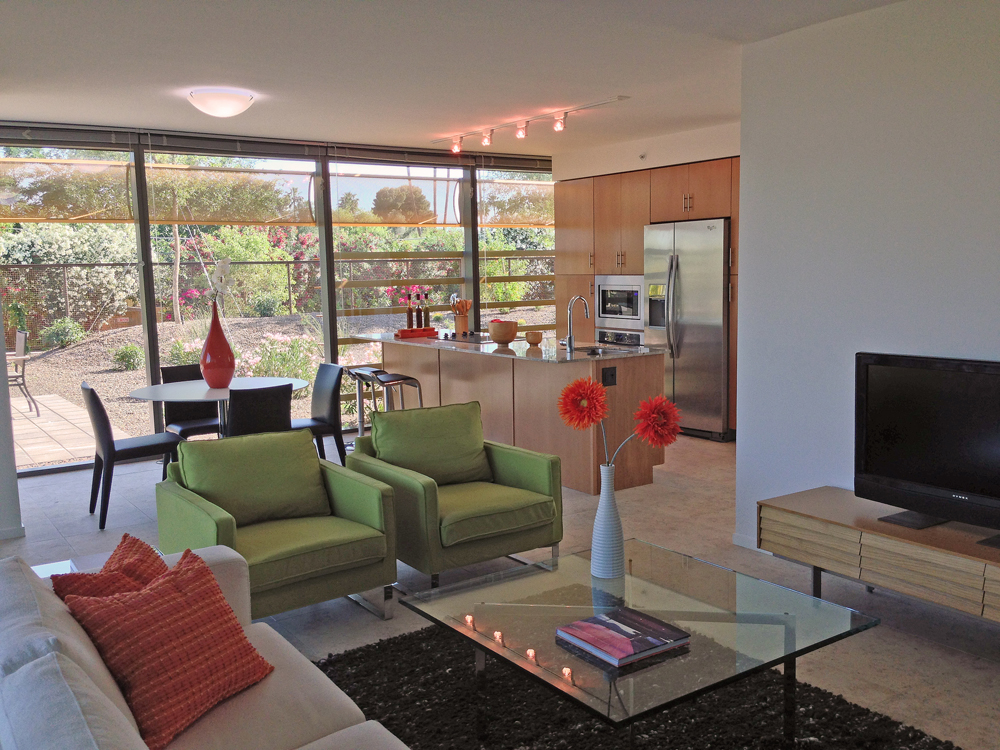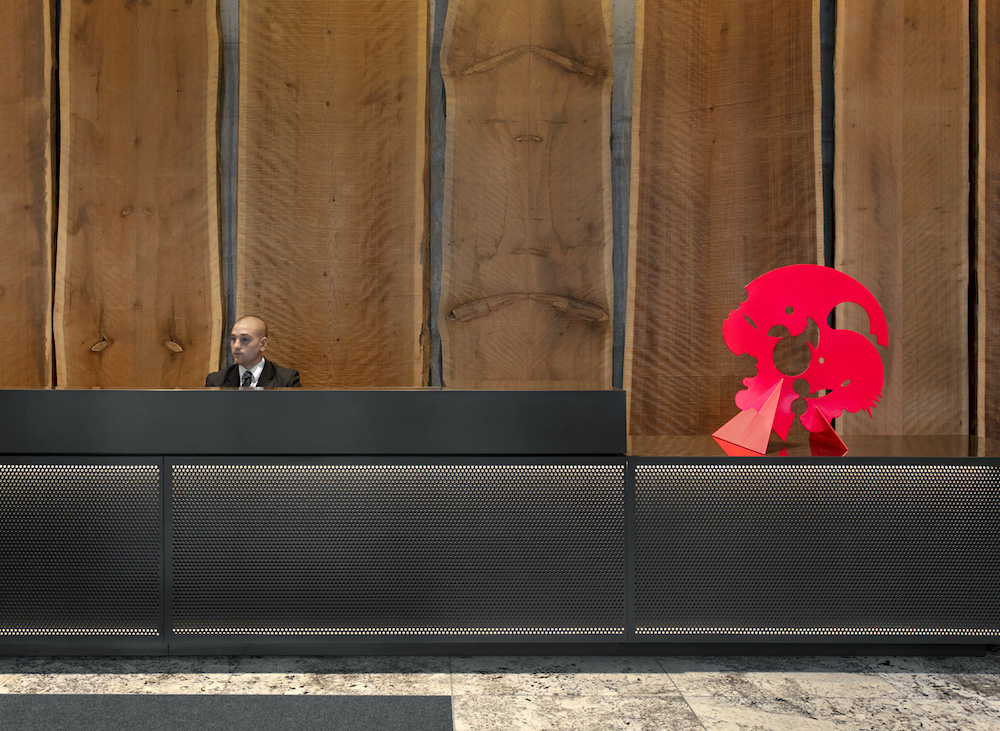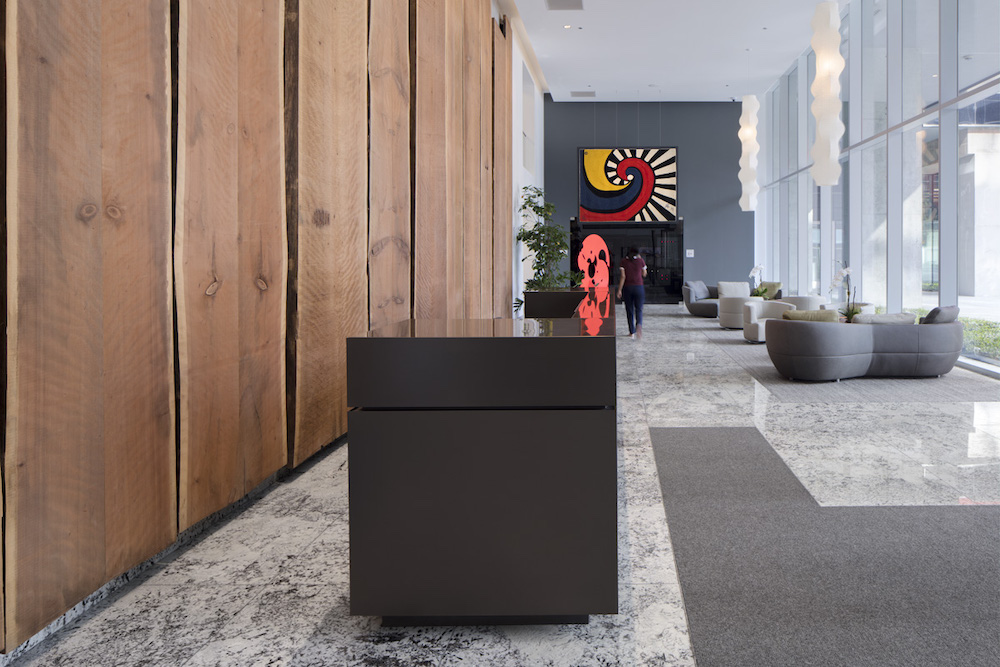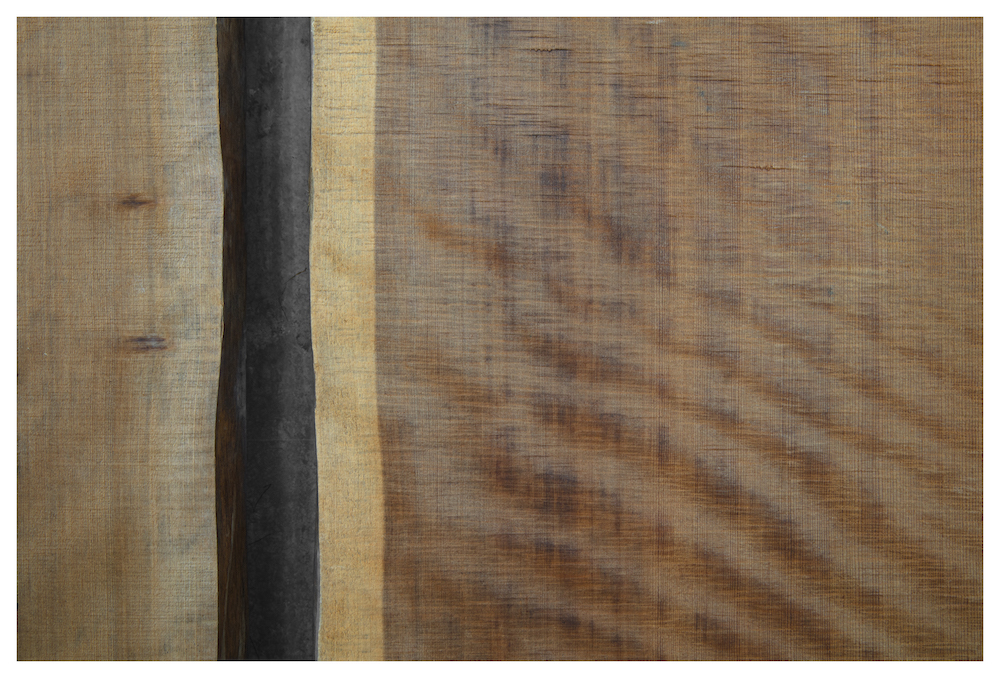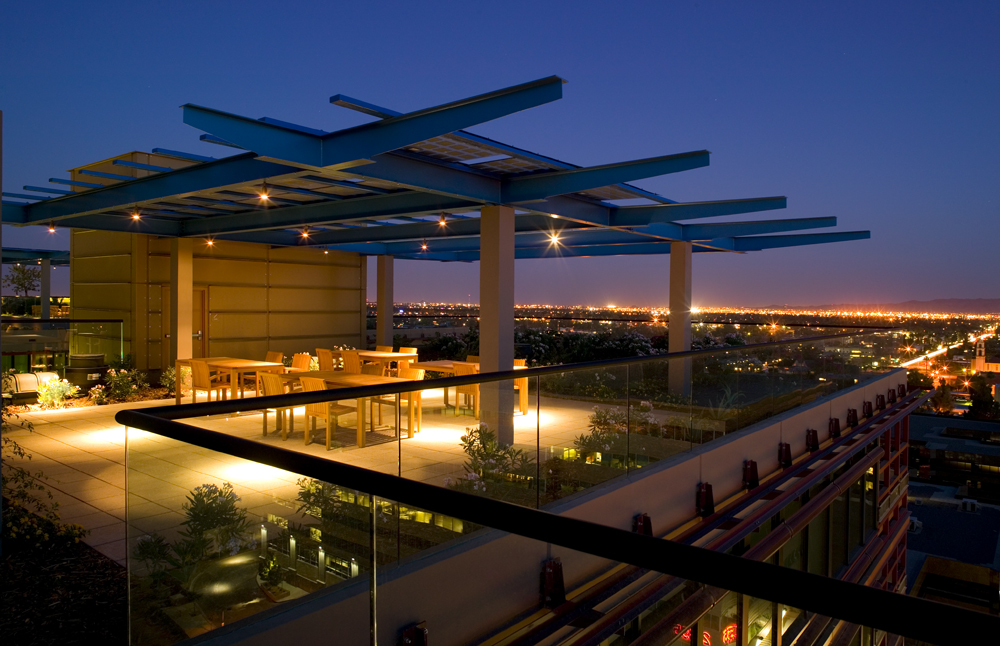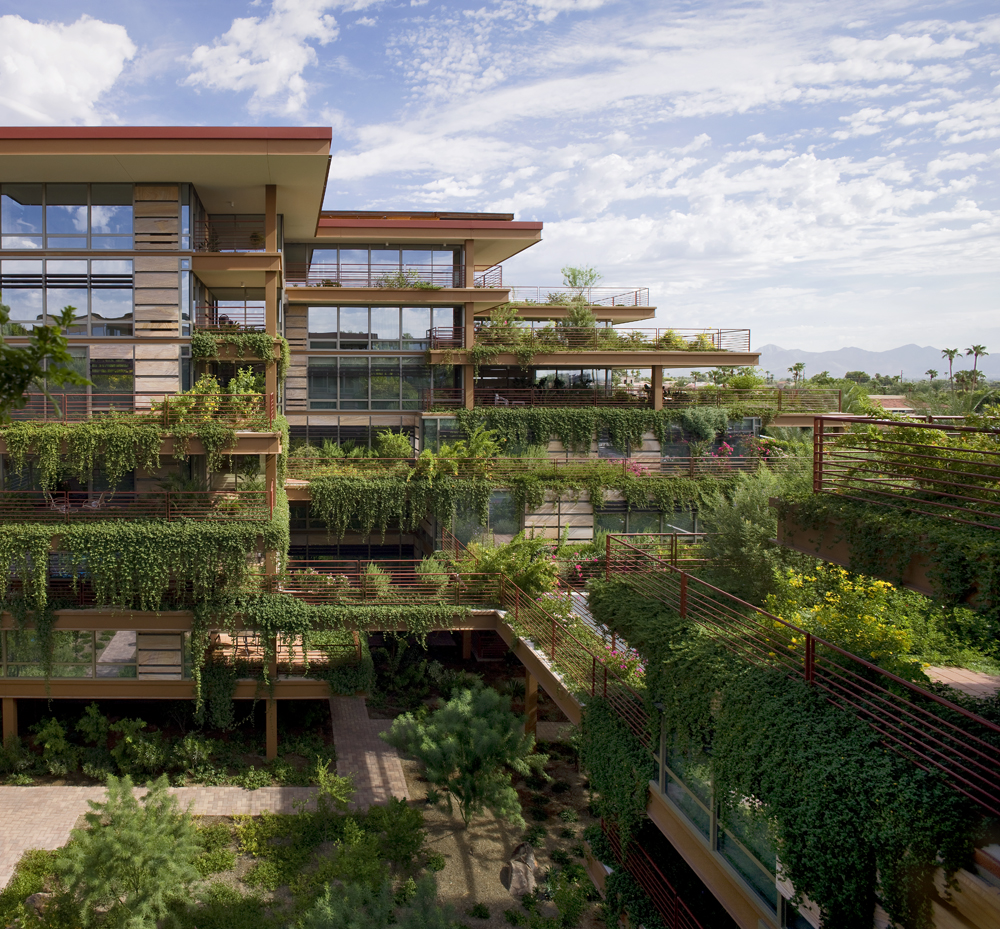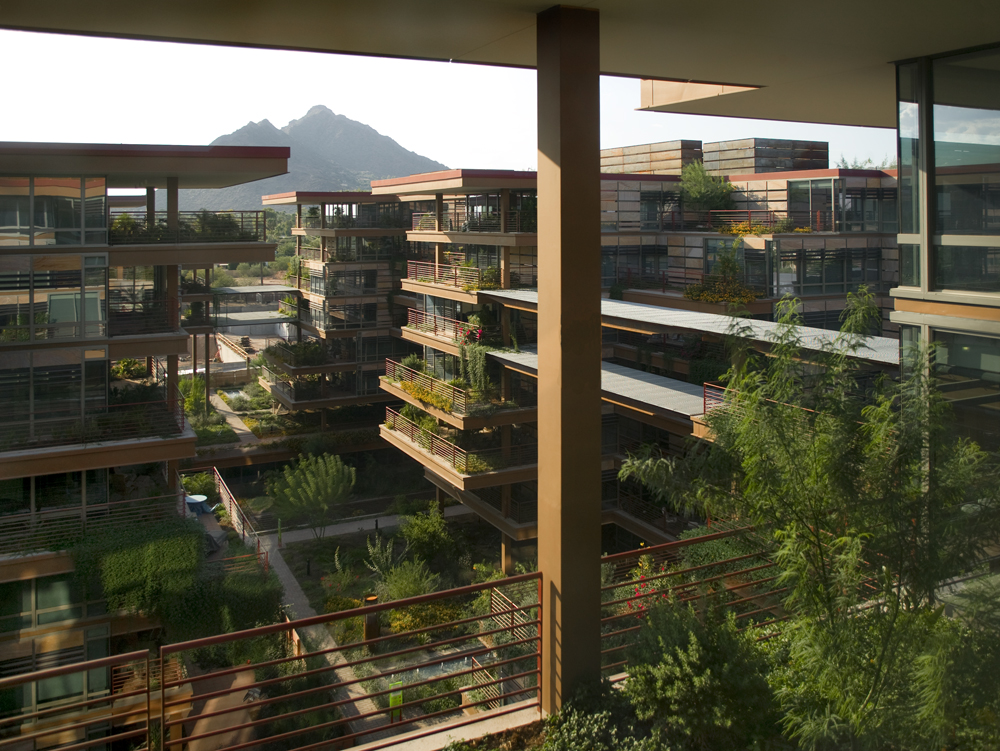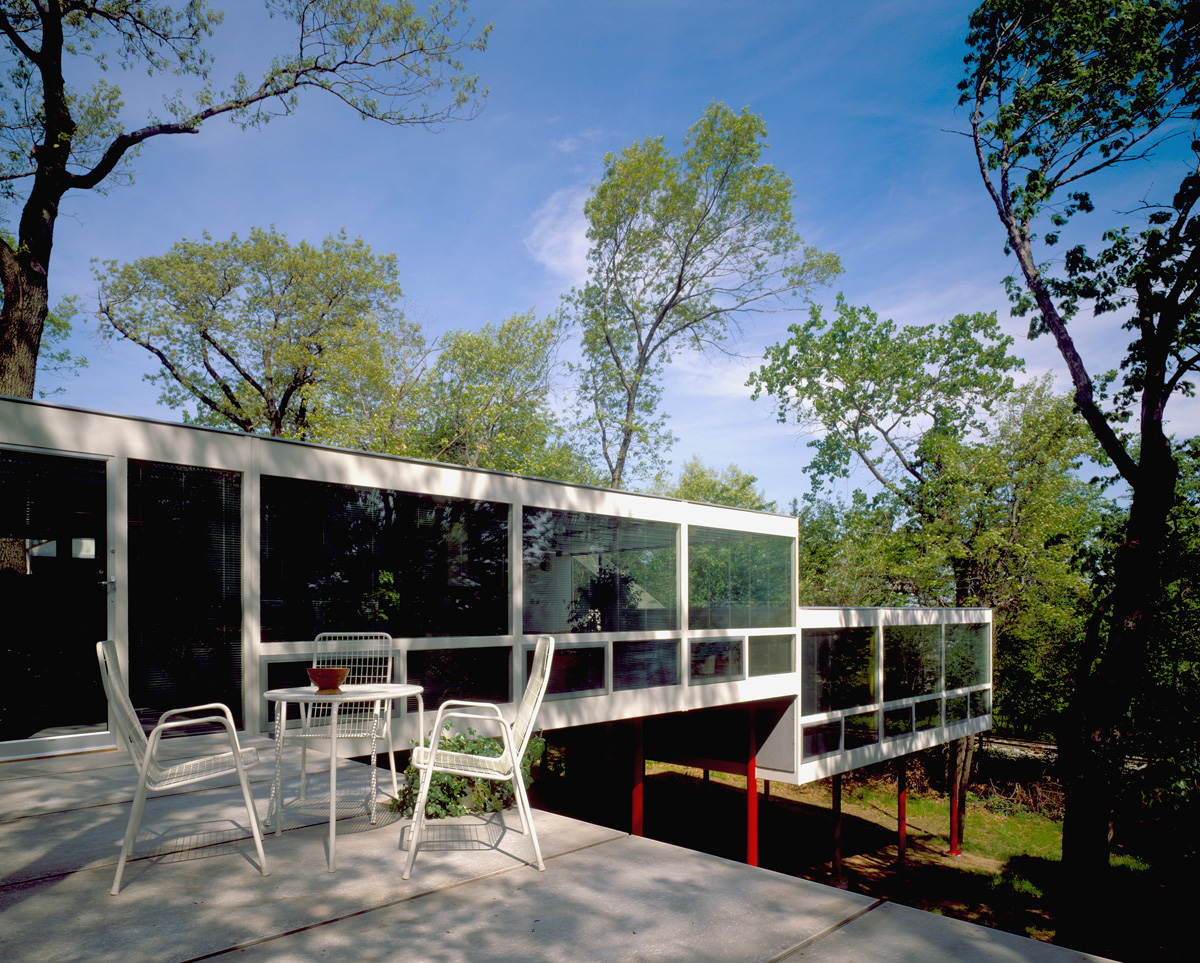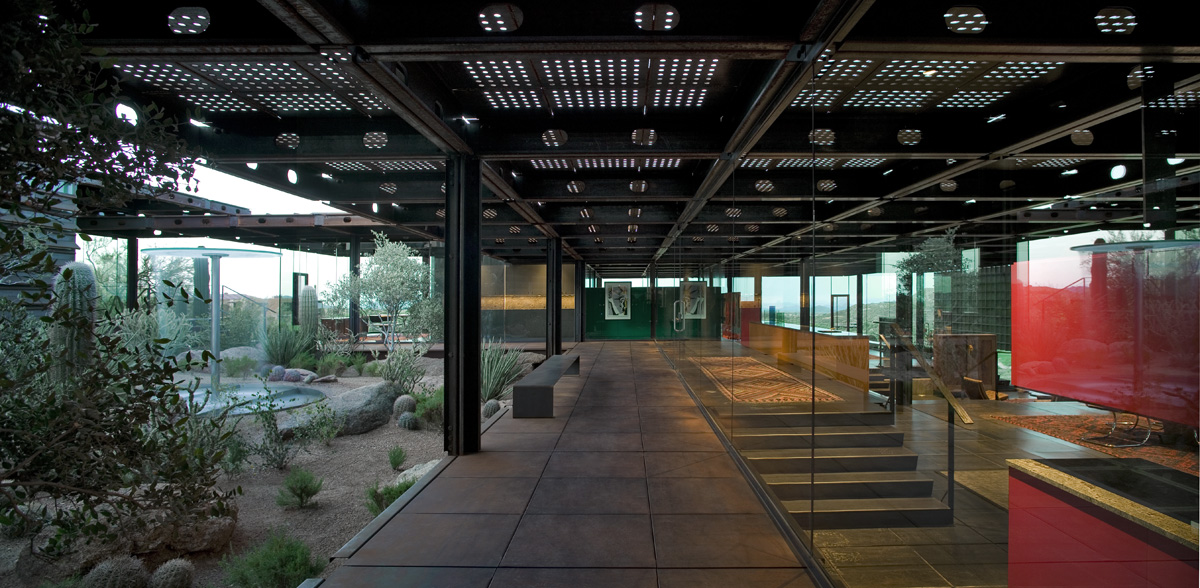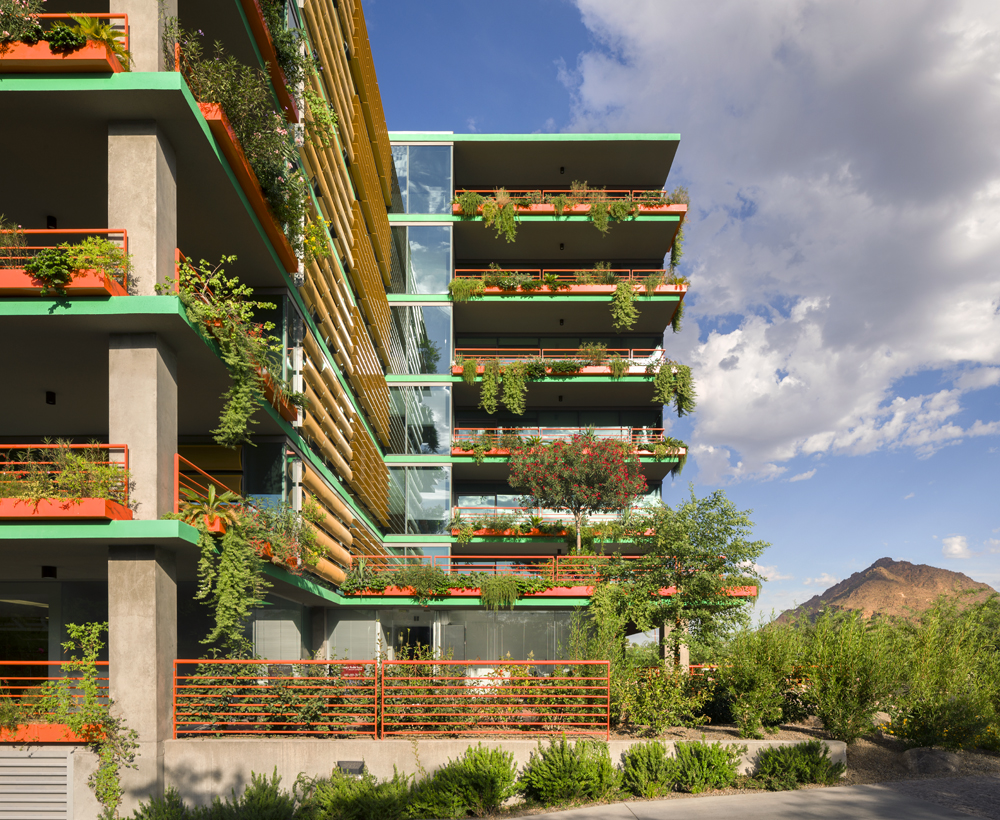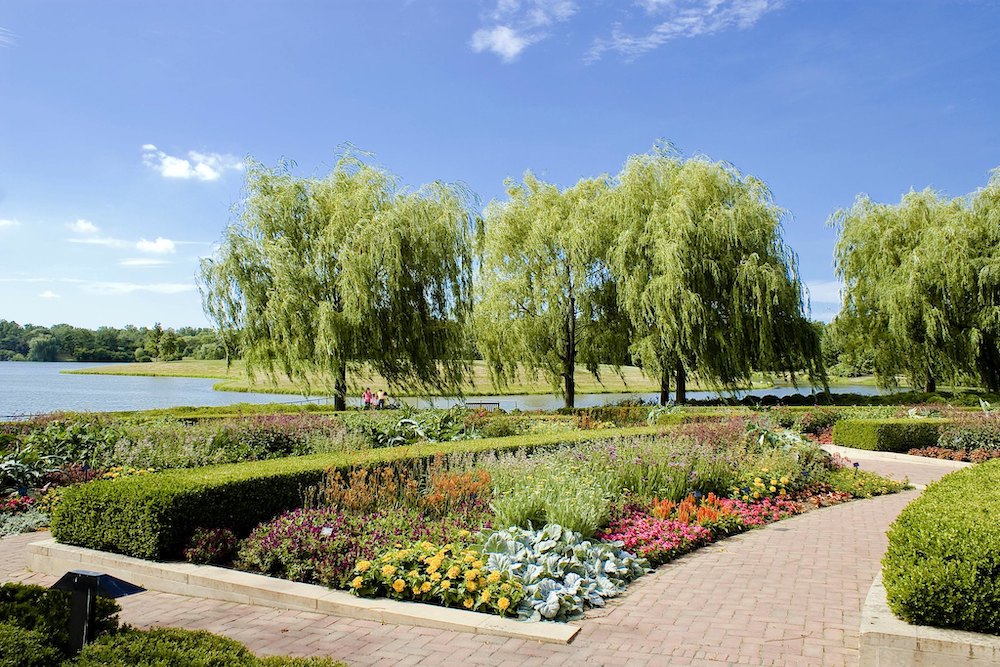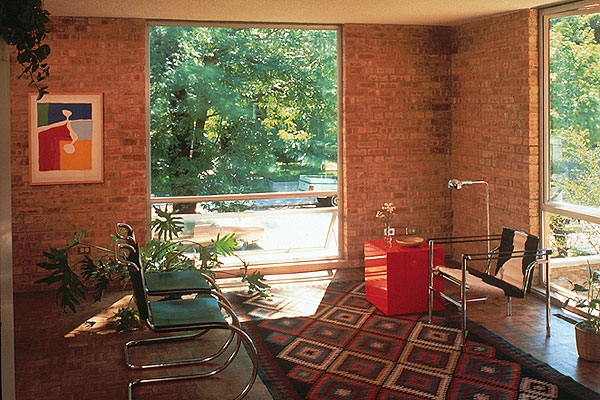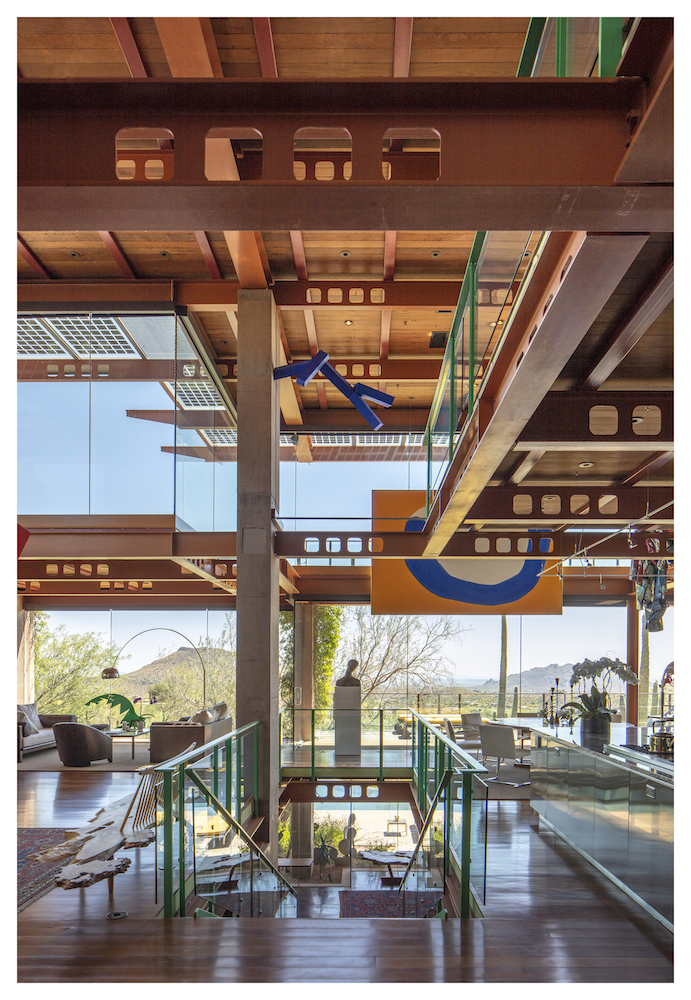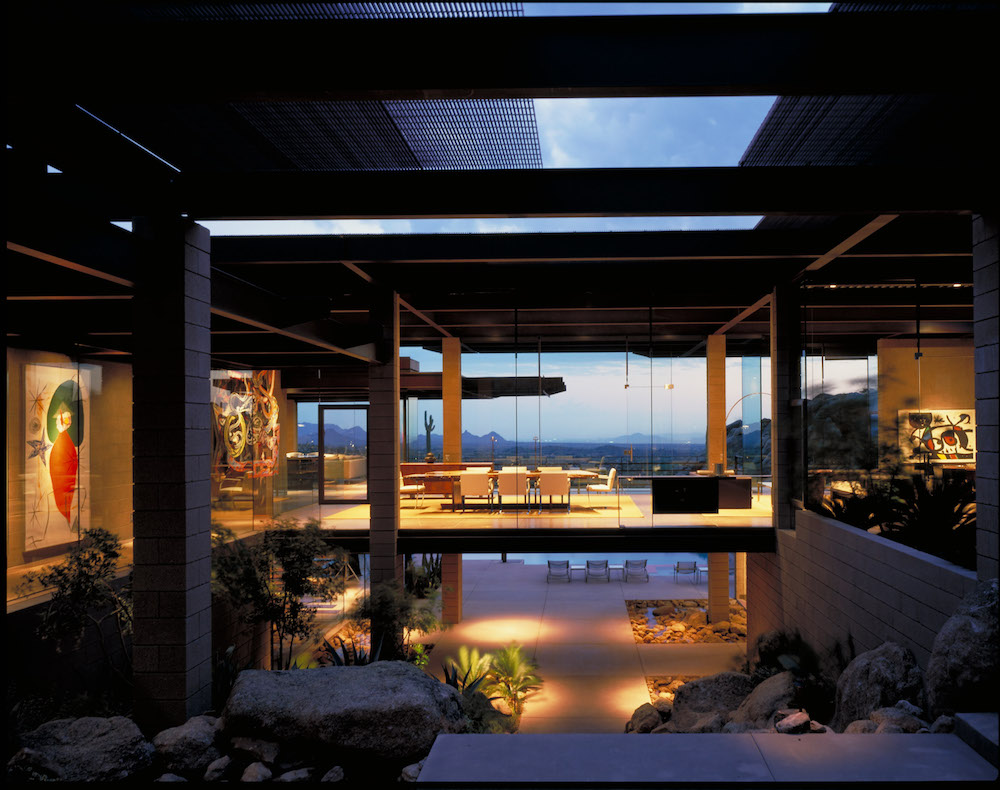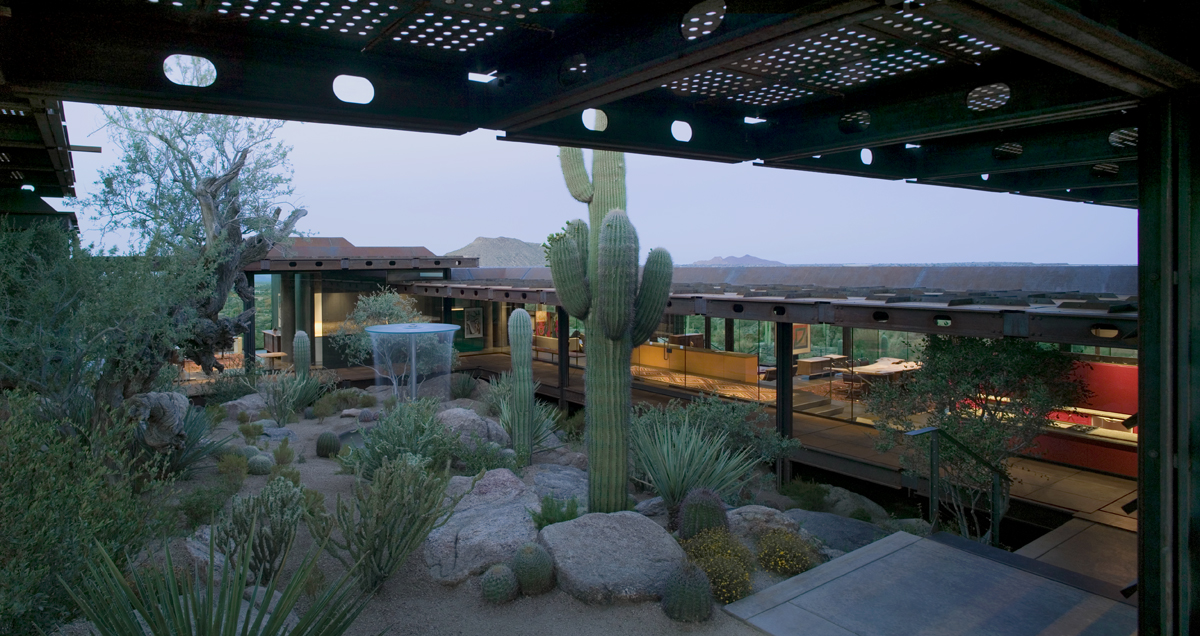Across all of our projects and properties, we believe amenities are essential to building wellness-focused, holistic spaces. From our single-family homes to our multi-family residences, we carefully curate our outdoor and indoor amenities to reflect these values. One of our favorite applications is utilizing our rooftop areas, particularly in our multi-family residences. Although rooftop gardens and green spaces have existed since the Hanging Gardens of Babylon, new technologies have allowed us to expand into sophisticated, expansive systems of features. Optima began using green roofs in Chicago back in the early 1980s, and have evolved our practice to include both green space and amenities throughout our properties in Arizona and Illinois.
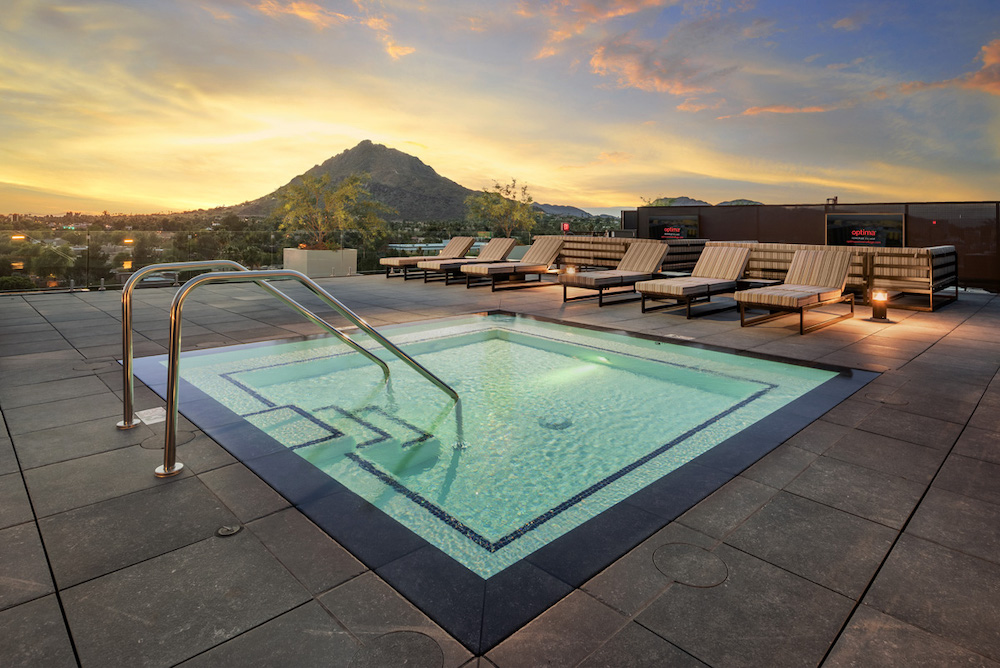
One of our favorite aspects of moving out to Arizona was creating outdoor spaces that celebrated and embraced the desert atmosphere. Our Arizona rooftop amenities include heated pools, built-in seating areas, spas,cold plunges, rooftop running tracks, outdoor yoga studios, entertaining spaces with barbecues and fire pits, and of course, panoramic mountain views. At Optima Sonoran Village in particular, we maximized the small footprint of the building to offer incredible views of Camelback mountain and to create socializing space for residents.
With state-of-the-art features and unparalleled views of the surrounding environments, our rooftop spaces across our Arizona projects create the perfect backdrop for time spent outside with loved ones.
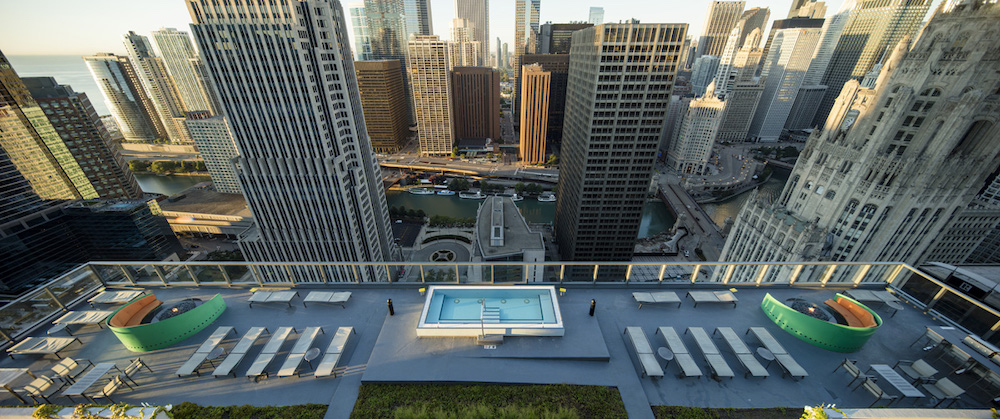
Despite the cold Chicago winters, our projects within the city still take advantage of their rooftop space for dynamic city views and amenities for our residents to enjoy. With outdoor heated swimming pools, cabanas and bars, outdoor saunas and steam rooms, outdoor terraces, fire pits, herb gardens, dog parks and outdoor children’s play areas, both Optima Chicago Center and Optima Signature feature plenty of enticing areas and activities.
Our building amenities are an integral step in our process of creating functional, beautiful and welcoming spaces, and in utilizing our rooftops, we extend our creativity into designing desirable, innovative outdoor space.
